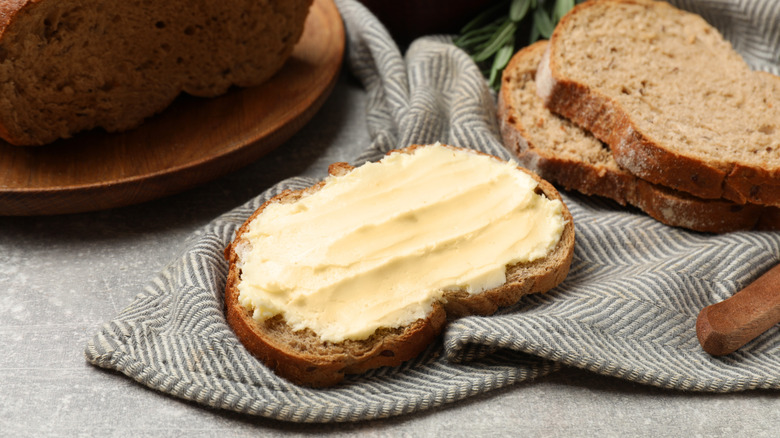We may receive a commission on purchases made from links.
Does making homemade butter just sound like something out of a TikTok trend? Or is it something easy and fun to do, more like crafting, making homemade pickles, or bespoke cottage cheese on the stove? It can be a way to get in touch with your ingredients, to be grounded in culinary history, even see a little science at work. And, hey, there are plenty of foodies out there ready to bring history to life. Butter churning isn’t just the stuff of old-world amusement parks, like Colonial Williamsburg, it’s pretty easy to make at home.
To create fresh, homemade butter, all you need is some heavy cream, a Mason jar, and a simple, hand cranked churning device. It’s not going to be enough butter to feed the entire village, but it’s certainly enough for some restaurant-style garlic bread or the perfect topper for your homemade buttermilk pancakes. The results are truly delicious. With this method, you can have hand-crafted butter in just about 10 minutes, and you can make it salty, sweet, or full of herbs and spices — however you want it. So, what gear do you need, and what do you need to know to start churning butter at home?
How to churn homemade butter simply in a Mason jar
Let’s start with the equipment. You can use just about any glass Mason jar you may have at home, but this Kilner Vintage Glass Butter Churn comes with the jar and miniature churning device. It’s sort of like a hand-cranked bicycle paddle, so all you’ll need to add is the heavy cream. About 10 ounces of cream is good. You can use a full 16 ounce container, but it might take a little more churning.
Once your machinery is in place, add the heavy cream to your Mason jar. Make sure it’s room temperature, or it will take much longer to whip into butter. You’ll churn for about 10 minutes and pour out the buttermilk as it separates. When you see the butter start to coagulate with extra liquid on top, it’s time to pour it off. To get the butter to solidify, you’ll need to rinse it with cold water — you can toss in some ice in a bowl to get it nice and frigid. Form the butter into a ball in your hand.
That’s it, you’ve got homemade butter. It will spread beautifully on a piece of toast right away. But you can take it in another direction, if you care to. Add a little salt to season it, or go full-on herb or garlic butter. And if pancakes are the ultimate melting point for your butter, try some honey or maple syrup.






